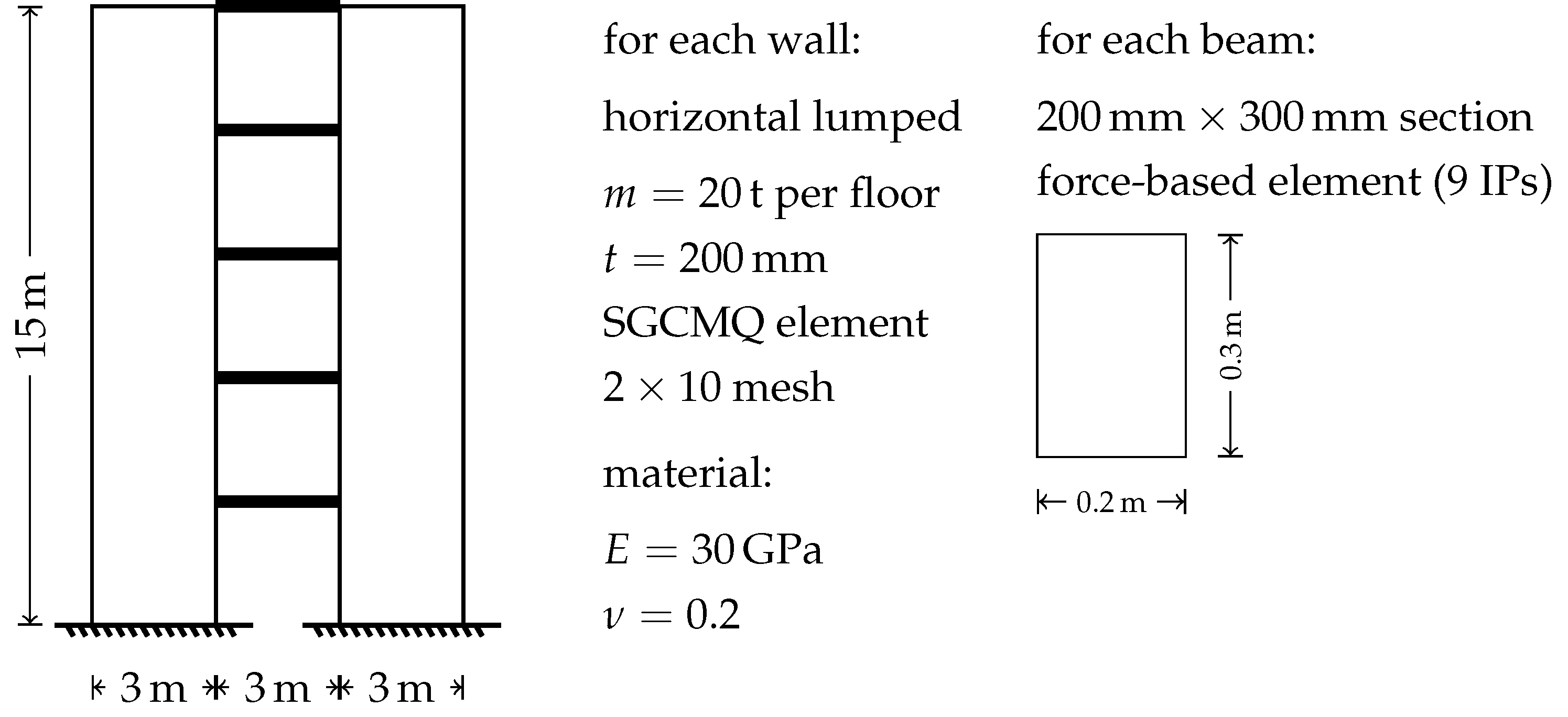[★★★☆☆] Response History Analysis of An Elastic Coupled Wall
In this page, we perform eigen analysis and response history analysis of an elastic coupled wall model.
The wall model is a simplified version of the example shown in section 7.2 of this paper: 10.1016/j.engstruct.2020.110760.
The model can be downloaded.
Model Brief
The geometry is summarized in the following figure.

Definitions of nodes, elements, materials, boundary conditions are stored in node.supan and element.supan. Use
proper commands to load files.
Eigen Analysis
Before performing the eigen analysis, the system is double-checked to be symmetric. In fact, as eigen analysis is normally conducted on elastic structures, which are most likely to be symmetric, it is in general not problematic as long as elasto-plastic behavior is not involved.
Now we define a Frequency step to compute ten eigenvalues of the generalized eigen problem.
| Text Only | |
|---|---|
Invoke analysis and check the eigenvalues.
| Text Only | |
|---|---|
The output is shown as follows.
| Text Only | |
|---|---|
Thus, the period of the first mode can be computed as
Response History Analysis
Ground Motion
We use one of the recordings of 2011 Christchurch Earthquake, the original raw recording can be obtained from
this page. Please
check NZStrongMotion for more details. The chosen record has a
tag of 20110221_235142_LPCC, the PGA is \(8.91~\mathrm{m/s^2}\).
After downloading the processed recording file, the following command can be used to define the amplitude.
| Text Only | |
|---|---|
The acceleration is applied to the structure, note NZStrongMotion produces normalized (dimensionless) amplitudes, to
apply an accelerogram of target PGA, the corresponding magnitude shall be adjusted to be equal to that PGA. In this
example, we assign a PGA of \(0.4g\).
| Text Only | |
|---|---|
Damping Model
The Lee's damping model is chosen as an illustration. Knowing that \(\omega_1=\sqrt{367.59}=19.17~\mathrm{rad/s}\), we assign a single basic function at \(\omega_1\) with \(5\%\) damping ratio.
| Text Only | |
|---|---|
Other Settings
We define a dynamic step and perform the analysis with the time step of \(0.005~\mathrm{s}\) for \(60~\mathrm{s}\).
| Text Only | |
|---|---|
Some Stats
This example consists of \(83\) nodes, equivalent to \(249\) DoFs. With one basic function used in the damping model, the size of matrix solved is about \(500\times500\). On recent machines, the response history analysis can be done within one minute. The solving time increases almost linearly with an increasing number of basic functions used in the damping model.
Result
We show roof displacement history to close this example.